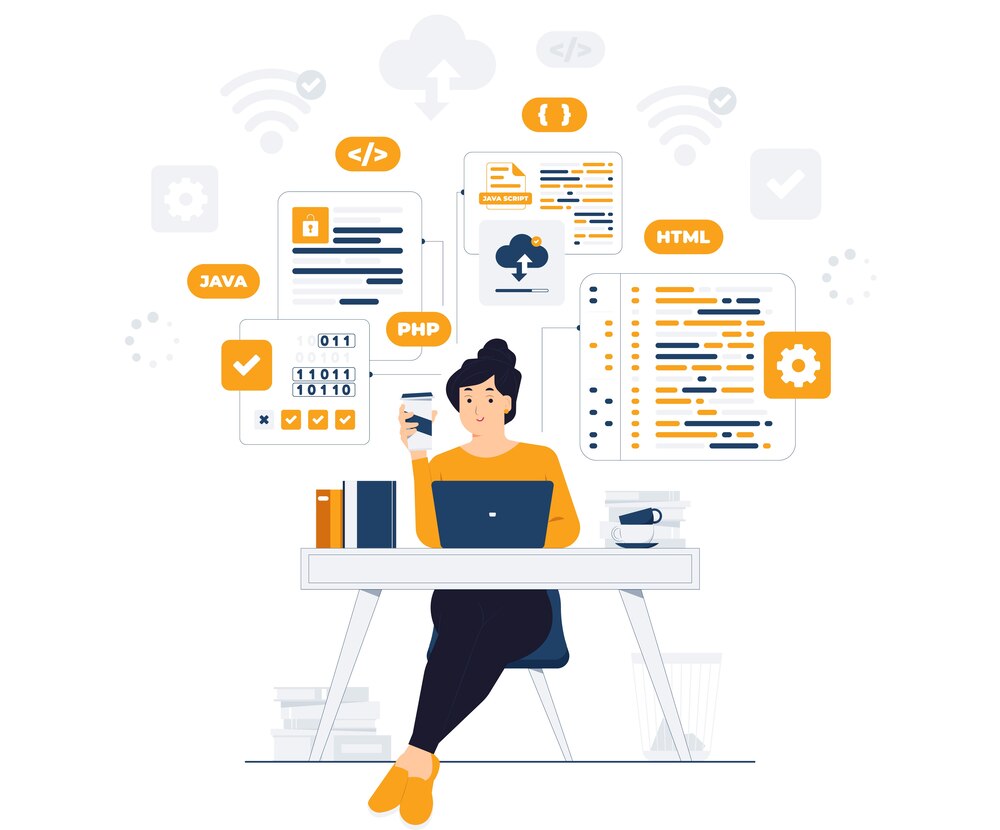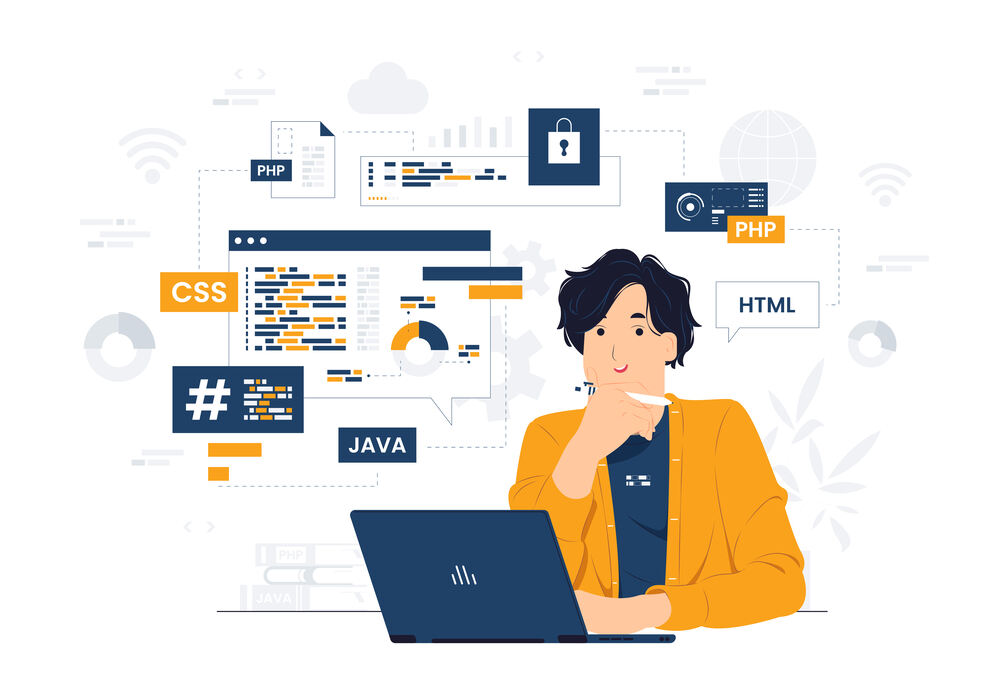
Discover how AI and ML advancements are enhancing the user-friendliness of SaaS software. Explore how intelligent automation, personalized experiences, and streamlined interfaces are transforming the way users interact with SaaS applications.
SaaS software, also known as Software-as-a-Service, has revolutionized how businesses and individuals access and utilize various applications. With its cloud-based nature, SaaS offers convenience, scalability, and cost savings compared to traditional on-premise software installations.
However, while SaaS has transformed the software landscape, there is always room for improvement to enhance user experience and make it more user-friendly. The advent of Artificial Intelligence (AI) and Machine Learning (ML) technologies has brought significant advancements in various industries.
From autonomous vehicles to personal assistants like Siri and Alexa, AI has become an integral part of our lives. When it comes to SaaS software, AI and ML hold immense potential to make it more intuitive, efficient, and tailored to individual needs. The integration of AI into SaaS brings numerous benefits that directly impact customer satisfaction.
One such benefit is automation – AI can automate repetitive tasks that often consume valuable time for users. By leveraging algorithms infused with cognitive capabilities, AI can handle routine processes like data entry or generating reports with minimal human intervention.
This not only enhances user productivity but also frees up their time to focus on more critical tasks. Moreover, ML plays a crucial role in personalizing the user experience within SaaS software. With ML algorithms analyzing vast amounts of data related to user behavior patterns and preferences over time, SaaS platforms can adapt their functionalities accordingly.
Another key aspect where AI excels in improving SaaS usability is error detection and prevention. Traditional software may occasionally encounter bugs or other issues that can hinder the smooth operation for users leading to frustration or even loss of critical data.
By implementing intelligent algorithms powered by machine learning models trained on extensive datasets containing known issues or anomalies in SaaS software, AI can detect and address potential errors before they impact the end user. This proactive approach ensures a more stable and reliable user experience.
AI can play a pivotal role by enabling features like voice commands or natural language processing (NLP) to interact with SaaS applications, providing a seamless experience for users with different abilities or preferences.
By catering to diverse user needs through AI-driven accessibility enhancements, SaaS software can ensure inclusivity and broaden its reach to a broader audience. The integration of AI and ML technologies holds exceptional promise for making SaaS software more user-friendly than ever before.
From automating time-consuming tasks to offering personalized experiences, detecting and preventing errors in real time, and ensuring accessibility for all users, the impact of AI on the future of SaaS is undeniable. As these technologies continue to advance at an accelerated pace, we can expect continuous innovation in the realm of SaaS development that will further elevate the user experience while driving productivity and customer satisfaction to new heights.
What is SaaS software?
Software as a Service (SaaS) has revolutionized how businesses and individuals access and utilize software applications. Unlike traditional software that requires installation on individual devices, SaaS is delivered over the internet, allowing users to access applications through web browsers.
SaaS software refers to cloud-based applications that are centrally hosted and managed by the service provider. One of the key advantages of SaaS software is its flexibility and scalability. Users can easily scale up or down their usage based on their needs without worrying about infrastructure or maintenance costs. Moreover, SaaS eliminates the need for complex user onboarding processes as it can be accessed from any device with an internet connection.
This accessibility eliminates compatibility issues and expands the reach of software solutions to a wider range of users. While traditional software development often requires significant upfront investments, SaaS operates on a subscription-based model where users pay only for what they use.
This brings cost savings for businesses by reducing the need for extensive hardware infrastructure and IT support staff. Additionally, automatic updates and bug fixes provided by SaaS providers ensure that users always have access to the latest features and security patches without any additional effort.
User-friendly interfaces are a hallmark of SaaS applications. Intuitive designs allow even non-technical users to navigate through complex functionalities effortlessly while maintaining high productivity levels.

Its user-friendly nature coupled with scalability, accessibility, cost savings, and automatic updates make it an appealing choice for businesses seeking innovation in their technology stack. With this foundation established, we can now explore how AI and ML technologies further enhance the user experience within this evolving landscape of SaaS development.
What is AI?
Artificial Intelligence (AI) is an innovative field of computer science that focuses on creating intelligent machines capable of mimicking human cognitive abilities. It encompasses the development of algorithms and systems that enable computers to perform tasks that typically require human intelligence, such as understanding natural language, recognizing patterns, learning from experience, and making decisions.
AI holds immense potential for transforming the user experience by making it more intuitive and user-friendly. By leveraging AI technologies, developers can enhance various aspects of SaaS applications to streamline workflows, improve productivity, and provide exceptional customer support. AI can achieve this through automation.
AI-powered automation can eliminate repetitive and mundane tasks for users, freeing up their time to focus on more critical activities. For example, in customer support scenarios where users frequently encounter common issues or questions during the user onboarding process, an AI-powered chatbot could effectively handle these queries promptly and accurately.
This not only reduces response times but also enhances customer satisfaction levels. Another key aspect where AI can greatly contribute to making SaaS software more user-friendly is through personalized experiences. With ML algorithms at its core, AI can analyze vast amounts of data collected from users’ interactions with the software to gain insights into their preferences and behaviors.
Based on this analysis, the software can then offer tailored recommendations or suggestions that align with each individual’s unique needs. For instance, a project management SaaS application could utilize ML techniques to understand a user’s working patterns and preferences over time.
It can intelligently suggest task prioritization strategies or offer automated reminders based on previous behavior data to increase efficiency and reduce cognitive load. Incorporating AI technology into SaaS software has the potential to revolutionize the future of user interfaces while enhancing overall productivity and customer satisfaction levels significantly.
Through automation features and personalized experiences driven by ML algorithms within these applications, users are set to benefit from cost savings due to improved efficiency, reduced error rates, and streamlined workflows. As AI continues to advance, we can expect even more innovative applications in SaaS software development, ultimately shaping the future of the industry.
What is ML?
Machine Learning (ML) is an integral component of the advancements in Artificial Intelligence (AI). It involves the development of algorithms and models that enable computer systems to learn from data and improve their performance over time.
ML plays a crucial role in making it more user-friendly by enhancing various aspects of the user experience. One fundamental application of ML in SaaS software is personalization.
By analyzing user data, ML algorithms can identify patterns and preferences, allowing for tailored experiences. For instance, ML can analyze customer usage patterns to recommend relevant features or content, significantly enhancing user onboarding and overall customer satisfaction.
ML algorithms can dynamically adapt the user interface based on individual preferences or contextual factors, ensuring a seamless and personalized journey for each user. Another important aspect where ML contributes to making SaaS software more user-friendly is error detection and prevention.
ML models can be trained to analyze vast amounts of data generated by users and identify anomalies or potential errors that might occur during software usage. This proactive approach allows for swift identification and resolution of issues before they impact users’ productivity or overall experience with the software.
By detecting errors early on, customer support teams can address issues promptly, leading to increased customer satisfaction and reduced costs associated with resolving complex issues. Machine Learning plays a vital role in augmenting SaaS software’s user-friendliness by enabling personalization and efficient error detection.
As AI continues to advance alongside technological innovation, we can expect further enhancements in accessibility, automation, productivity gains, cost savings, and overall improvements in the future of SaaS software development. The integration of AI and ML technologies holds great promise for creating highly intuitive and customizable interfaces that cater to diverse user needs while revolutionizing the way we interact with SaaS applications.
How can AI and ML make SaaS software more user-friendly?
AI and ML have revolutionized the way SaaS software is designed and developed, ultimately making it more user-friendly. This enhanced user-friendliness directly impacts various aspects of SaaS software, including user onboarding, productivity, customer satisfaction, and accessibility.
By leveraging AI algorithms and ML models, developers can now create SaaS solutions that cater to the unique needs of individual users, resulting in a highly personalized and intuitive user experience.
AI and ML greatly contribute to user-friendliness is in improving the overall user interface (UI) of SaaS software. Through sophisticated algorithms, AI can analyze vast amounts of data about user behavior and preferences.
This data-driven approach enables software designers to make informed decisions when designing the UI, resulting in interfaces that are aesthetically pleasing and easy to navigate. ML algorithms can continuously learn from user interactions with the UI, allowing for real-time adjustments and refinements that further enhance the overall usability.
Another significant way AI and ML enhance user-friendliness is by automating tasks that would otherwise require manual effort. By employing AI-powered automation techniques such as natural language processing (NLP) or image recognition, SaaS software can perform repetitive or mundane tasks on behalf of users.
This not only saves time but also increases productivity by reducing human error. For instance, customer support processes can be automated using chatbots powered by AI-ML models capable of understanding natural language queries and providing accurate responses promptly.
Repetitive data entry tasks or report generation can be automated using smart algorithms driven by machine learning capabilities. AI and ML have fundamentally transformed the landscape of SaaS software by making it more user-friendly through improved UI design and task automation.
The seamless integration of these technologies empowers developers to create highly personalized experiences for users while simultaneously increasing productivity levels within organizations.
As we delve into the future of SaaS development, it is evident that AI-ML-driven solutions will continue to play a pivotal role in enhancing user-friendliness, ultimately driving up customer satisfaction and ensuring the long-term success of SaaS software.

How AI can automate tasks
By leveraging AI algorithms, SaaS platforms can automate various repetitive and mundane tasks, freeing up valuable time for users to focus on more important and strategic activities. One area where AI has excelled in automating tasks is customer support.
Customer support teams have been burdened with handling countless queries and requests from users. With the integration of AI-powered chatbots and virtual assistants into SaaS software, the burden on customer support teams has been greatly reduced.
These intelligent bots can handle basic user inquiries and provide instant responses, thereby enhancing user experience by delivering prompt assistance around the clock. To provide immediate support, AI-powered chatbots can learn from user interactions over time using ML techniques.
This enables them to improve their responses and accuracy over time, resulting in enhanced customer satisfaction. Moreover, automation through AI extends beyond just customer support into various other aspects of SaaS software functionality.
AI algorithms can automate data entry processes by extracting relevant information from documents or emails and populating it within the system automatically. This not only saves users precious time but also reduces errors that may occur during manual data entry.
As more advanced AI models are developed and integrated into SaaS software ecosystems, we can expect even higher levels of automation that will streamline workflows further while enhancing productivity for businesses across industries.
AI’s ability to automate tasks within SaaS software is a game-changer for both businesses and users alike. It not only leads to significant cost savings but also improves user experiences by providing efficient solutions that require minimal manual intervention.
The future of AI-driven automation holds immense potential for shaping the future of SaaS by enabling personalized user onboarding, error detection, and streamlining complex processes. With continued advancements in AI and ML technologies, the future of SaaS software will undoubtedly be more user-friendly, accessible, and productive.
How ML can personalize experiences
In the realm of SaaS software, personalization has become a key factor in enhancing the user experience and driving customer satisfaction. This is precisely where Machine Learning (ML) comes into play, revolutionizing the way SaaS platforms cater to individual needs.
ML algorithms can analyze vast amounts of user data, including preferences, behavior patterns, and usage history. By harnessing this information, ML algorithms can create personalized experiences that cater precisely to each user’s unique requirements.
ML excels in personalizing experiences through adaptive recommendations. By leveraging historical data and user behavior patterns, ML algorithms can understand and predict what features or content within a SaaS application are most relevant to an individual user.
These intelligent recommendations enable users to uncover functionalities they may not have discovered otherwise, significantly improving their productivity and overall satisfaction with the software. ML empowers SaaS platforms to dynamically adjust their user interfaces based on individual preferences.
Through an iterative process of analysis and adaptation, ML algorithms learn which layout designs or color schemes resonate better with specific users. As a result, users are presented with interfaces that are tailored to their visual preferences and accessibility needs—be it adjusting font sizes for visually impaired individuals or offering dark mode options for those who prefer reduced screen glare.
This level of personalization ensures that SaaS software is not only more visually pleasing but also more accessible for all users. Machine Learning has revolutionized how SaaS software can deliver personalized experiences to its users.
Through adaptive recommendations and customizable interfaces driven by ML algorithms’ analysis of vast amounts of user data, SaaS platforms can enhance productivity while ensuring customer satisfaction remains at the forefront.
As technology continues to advance in this domain, we can expect even greater levels of personalization in future iterations of AI-infused SaaS applications—a testament to the ongoing innovation shaping the future of both AI/ML and the SaaS industry as a whole.
How AI can detect and prevent errors
When it comes to SaaS software, errors can be a hindrance to productivity and customer satisfaction. With the integration of AI technologies, such as machine learning algorithms, SaaS providers now have the power to detect and prevent errors before they impact the user experience.
AI’s ability to analyze vast amounts of data in real time enables it to identify patterns and anomalies that may indicate potential errors or issues within the system. AI can detect errors through anomaly detection techniques.
By establishing baseline patterns of normal behavior within the SaaS software, AI algorithms can then continuously monitor user interactions and system performance to identify any deviations from these established norms. For example, if a certain feature or functionality suddenly starts behaving differently or producing unexpected results, the AI system can flag this as a potential error.
This proactive approach allows SaaS providers to address issues before they cause significant disruption or frustration for users. Moreover, AI-powered error detection also extends to monitoring user behavior and feedback.
Through natural language processing and sentiment analysis techniques, AI algorithms can analyze user comments, support tickets, and feedback forums in real time. By scanning for keywords related to potential issues or frustrations expressed by users, AI systems can quickly pinpoint areas within the SaaS software that may require attention or improvement.
This valuable information not only helps in identifying errors but also provides insights into how specific features or functionalities can be optimized for better user satisfaction. By leveraging AI’s error detection capabilities in their SaaS software development processes, providers aim not only to minimize interruptions but also to reduce customer support costs by proactively addressing potential issues before they arise.
This level of automation allows for a more seamless user experience during onboarding and beyond while ensuring that customers receive prompt resolutions whenever an actual error occurs.
Ultimately, enhanced error detection through intelligent systems empowers both SaaS providers and users alike by fostering innovation and driving continuous improvement toward a future where SaaS software is increasingly reliable and user-friendly.
How AI can make SaaS software more accessible
One crucial aspect of making SaaS software more user-friendly is ensuring accessibility for a wide range of users. AI plays a pivotal role in achieving this goal by incorporating features that cater to individuals with diverse needs and abilities. For instance, AI-powered voice assistants can revolutionize the way users interact with SaaS applications, allowing them to navigate through complex workflows using voice commands.
This not only enhances the user experience but also enables individuals with disabilities or those from non-technical backgrounds to access and utilize SaaS software efficiently. AI can assist in improving the accessibility of SaaS software by automating user onboarding processes.
Through intelligent algorithms and predictive analysis, AI can understand user preferences and guide them through initial setup procedures tailored to their specific requirements. This eliminates barriers and reduces friction during the onboarding process, leading to enhanced customer satisfaction and increased adoption rates.
AI-driven customer support systems can offer real-time assistance by providing personalized recommendations and troubleshooting guidance, thereby empowering users to overcome challenges independently while utilizing SaaS software. AI techniques such as machine learning (ML) can help enhance the accessibility of SaaS software by adapting the user interface based on individual preferences.
ML algorithms can learn from user behavior patterns and customize the display layout or adjust font sizes accordingly, making it easier for users with visual impairments or specific reading preferences to navigate through the application seamlessly. By providing these personalized experiences, SaaS vendors demonstrate their commitment to inclusivity while improving productivity for all users.
Enabling accessibility in SaaS software is paramount for ensuring a positive user experience and driving customer satisfaction. The incorporation of AI technologies opens up new avenues for innovation in this regard.
By leveraging automation, personalization features driven by ML algorithms, and intelligent support systems powered by AI solutions, vendors can break down barriers that hinder usability and create a more inclusive environment within their applications.
As we look towards the future of AI and ML in SaaS development, the continued focus on accessibility will undoubtedly bring about remarkable advancements, cost savings, and an immense boost in user-friendly software.
Conclusion:
The integration of AI and ML technologies in SaaS software holds immense potential to revolutionize the user experience and enhance user-friendliness. The future of SaaS lies in the seamless combination of these cutting-edge technologies, enabling businesses to achieve unprecedented levels of productivity, cost savings, and customer satisfaction.
With AI automation, routine and repetitive tasks that were once time-consuming for users can now be streamlined and executed with incredible efficiency. This not only saves valuable time but also allows users to focus on more strategic aspects of their work.

The error detection capabilities offered by AI algorithms help prevent costly mistakes and improve data accuracy within SaaS platforms. By constantly monitoring system performance, AI can swiftly identify anomalies or discrepancies, ensuring smooth operations.
ML plays a pivotal role in personalizing the user experience within SaaS software. By analyzing vast amounts of data collected from user interactions, ML algorithms can offer tailored recommendations and suggestions that align with each individual’s preferences and needs.
This level of personalization not only enhances user satisfaction but also drives innovation by fostering a deeper understanding of customer behavior. Moreover, accessibility is a key aspect that AI brings to the table in terms of making SaaS software more user-friendly for all individuals.
With features like voice recognition, text-to-speech capabilities, and adaptive interfaces designed for different devices or disabilities, AI facilitates inclusivity by enabling users with diverse needs to access and utilize SaaS platforms effectively.
The combination of automated processes, advanced error detection mechanisms, and personalized experiences facilitated by ML algorithms alongside enhanced accessibility will undoubtedly contribute to heightened productivity levels for businesses while nurturing unparalleled customer satisfaction.
As such technologies evolve further over time with continued research and advancements in artificial intelligence disciplines, we can anticipate even more groundbreaking innovations that will shape the future of AI and ML in the SaaS industry.
The future of AI and ML in SaaS development
AI and ML are poised to become integral components of SaaS applications, driving innovation and enhancing user experiences. we can expect significant advancements in the realm of user interface (UI) and user experience (UX).
Through the use of AI and ML algorithms, SaaS platforms will be able to provide a highly personalized and intuitive UI, thereby improving customer satisfaction and retention. By leveraging AI capabilities, SaaS providers can automate various aspects of their customer support processes.
chatbots powered by natural language processing algorithms can handle routine inquiries and provide quick responses to users’ questions or issues. This automation not only reduces the burden on customer support teams but also ensures swift resolution for users.
ML algorithms can analyze patterns in user behavior and preferences to offer proactive support recommendations or suggest relevant features or upgrades tailored specifically to individual users’ needs. AI continues to advance, error detection will become more sophisticated within SaaS applications.
Machine learning models can be trained on vast amounts of data to identify potential errors or anomalies in real time. By detecting errors early on, AI-powered systems can minimize user disruptions while reducing business downtime.
This not only enhances productivity but also contributes to cost savings by mitigating potential losses associated with system failures. In terms of accessibility enhancements, AI-powered voice recognition technology holds great promise for enabling more inclusive software experiences.
By integrating voice commands into SaaS applications using natural language processing algorithms, individuals with disabilities who may have difficulty operating traditional interfaces will have a more seamless interaction with the software. Looking ahead into the future of SaaS development, it is evident that AI and ML will continue to play pivotal roles in making software more user-friendly across various domains.
From automating tasks through innovative features like chatbots and recommendation systems to personalizing experiences based on individual preferences, the integration of AI and ML will undoubtedly shape the way SaaS platforms are designed, deployed, and utilized.
By embracing these technologies, businesses can empower their users with enhanced productivity and satisfaction while staying at the forefront of technological advancements in the ever-evolving landscape of software development.
Ready to innovate and transform your business? Say hello to CodeBeavers!
If you are looking for ways to bring your product or app ideas to life? We’ve got your back. CodeBeavers has the tools and engineers you need to make your projects come alive. With CodeBeavers, you’ll be able to build faster than ever, deploy code with ease, and scale like never before. Send us your requirements now, and let’s start winning together.




